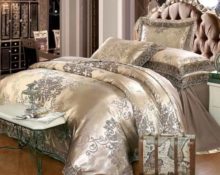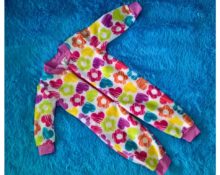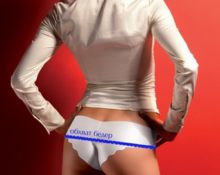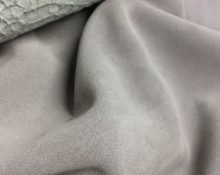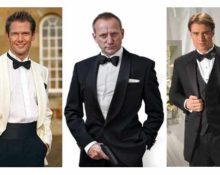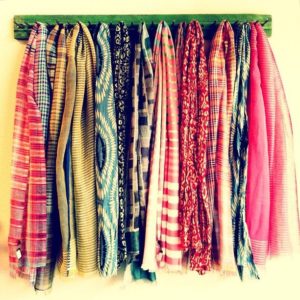 A scarf is a universal accessory that has long become a must-have in the wardrobe of both men and women. If previously it was bought mainly for protection from the cold, now it is worn more as a beautiful addition that allows you to play up your look. Often this item becomes the central link of the ensemble. Having several scarves in your wardrobe that are different in style, design, composition and color can radically change your looks, creating new ones every day.
A scarf is a universal accessory that has long become a must-have in the wardrobe of both men and women. If previously it was bought mainly for protection from the cold, now it is worn more as a beautiful addition that allows you to play up your look. Often this item becomes the central link of the ensemble. Having several scarves in your wardrobe that are different in style, design, composition and color can radically change your looks, creating new ones every day.
When buying a new accessory, it is important to know what material it is made from. Let's look at the nuances and features of each.
What material to choose a scarf from?
In addition to aesthetic qualities, a neck accessory should be pleasant and comfortable to wear, and also fulfill its intended purpose: to create the desired microclimate for its owner. So, depending on the situation, it can warm you up in the cold, protect you from the wind, and protect you from the sun. The material from which the accessory is made is responsible for this.
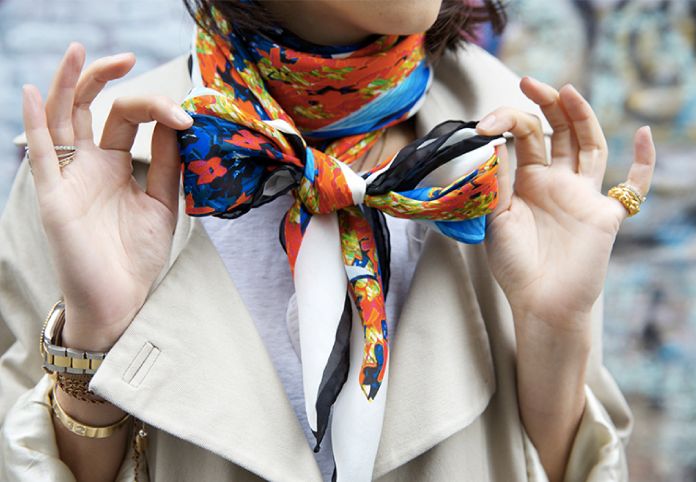
When purchasing an item in a boutique, you always have the opportunity to touch the fabric and feel it to understand whether it suits you. When ordering an accessory online, you only see a beautiful picture and characteristics of the product, so the correct purchase here depends on your knowledge of the intricacies of choice.
Of course, everything matters: appearance, size, manufacturer, and price. But the main thing is the material. It depends on him whether you will wear a new thing with pleasure or it will hang in the closet. And also how long the item will last and what care it will require.
Let's tell you in more detail about the most popular materials today from which scarves are made.
Types of materials
First of all, you need to pay attention to the structure of the fabric - knitted, knitted or woven, as well as the composition of the fibers.
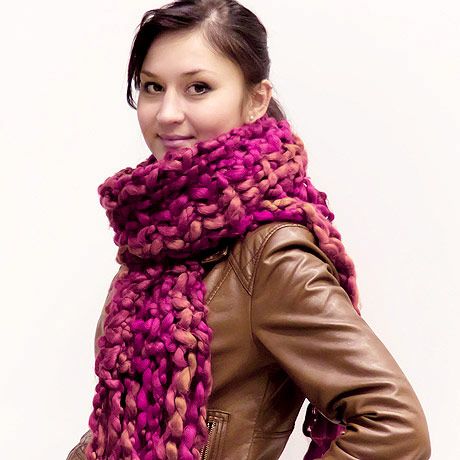 Knitted and knitted materials are made up of loops of yarn joined in a variety of ways, either by hand or by knitting machine. The loops can be positioned longitudinally, transversely and obliquely, creating all kinds of patterns.
Knitted and knitted materials are made up of loops of yarn joined in a variety of ways, either by hand or by knitting machine. The loops can be positioned longitudinally, transversely and obliquely, creating all kinds of patterns.
Woven fabrics look like longitudinal and transverse weave of yarn fibers and are produced on a loom.
ATTENTION! It is a mistake to believe that if a scarf is knitted, then it is warm. It depends on the composition of the yarn from which it is made.
Wool
Wool fiber is one of the most popular and in demand for making neck products. Thanks to its natural properties, it retains heat while allowing air to pass through.
Woolen items can vary in price, and the range is large. What's the matter?
The quality, and, accordingly, the price of a woolen item depends on the structure of the fibers. The coarser and thicker the cheaper.
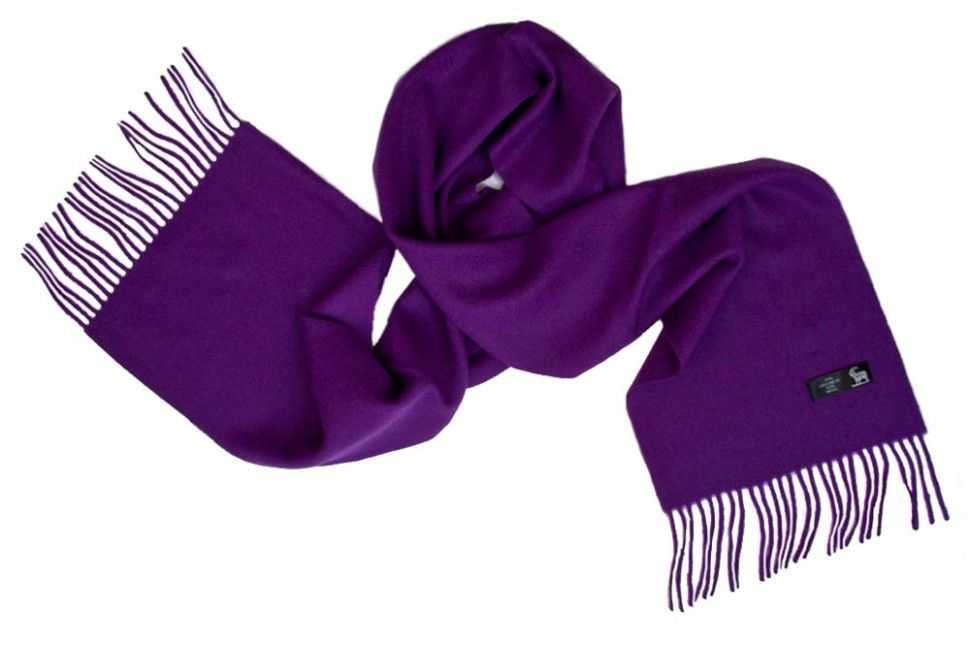
The raw materials are obtained by shearing or combing the undercoat of animals. Wool is used on an industrial scale:
- sheep (the most valuable is merino, obtained from Australian sheep);
- Kashmir goats - cashmere and mohair;
- llamas - alpaca;
- rabbit - angora.
Due to the high cost of wool yarn, it is often used for scarves in combination with synthetic fibers, mainly acrylic.
IMPORTANT! To preserve the quality of wool, it is better to buy a product in which its percentage composition is above 60%.
Buying a wool scarf is a great choice to wear during the colder months.
Silk
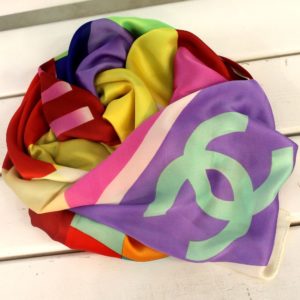 The brightest, most spectacular and elegant scarves are made from natural silk. Silk fiber is obtained from silkworm cocoons. This is a rather labor-intensive and time-consuming process, which explains the high cost of the material.
The brightest, most spectacular and elegant scarves are made from natural silk. Silk fiber is obtained from silkworm cocoons. This is a rather labor-intensive and time-consuming process, which explains the high cost of the material.
Silk fabric is delicate and flowing; it makes very beautiful and pleasant stoles and scarves. They are worn as an accessory around the neck, as a decoration on a handbag, or as a headdress.
ADVICE! Silk is a light, flowing material with a smooth surface, which is worth choosing for those with sensitive skin. A silk scarf will not rub delicate skin.
Cotton
Cotton is always the material of choice for products that remain in contact with the skin for a long time. The natural origin of the material allows it to absorb excess moisture and allow air to pass through well.
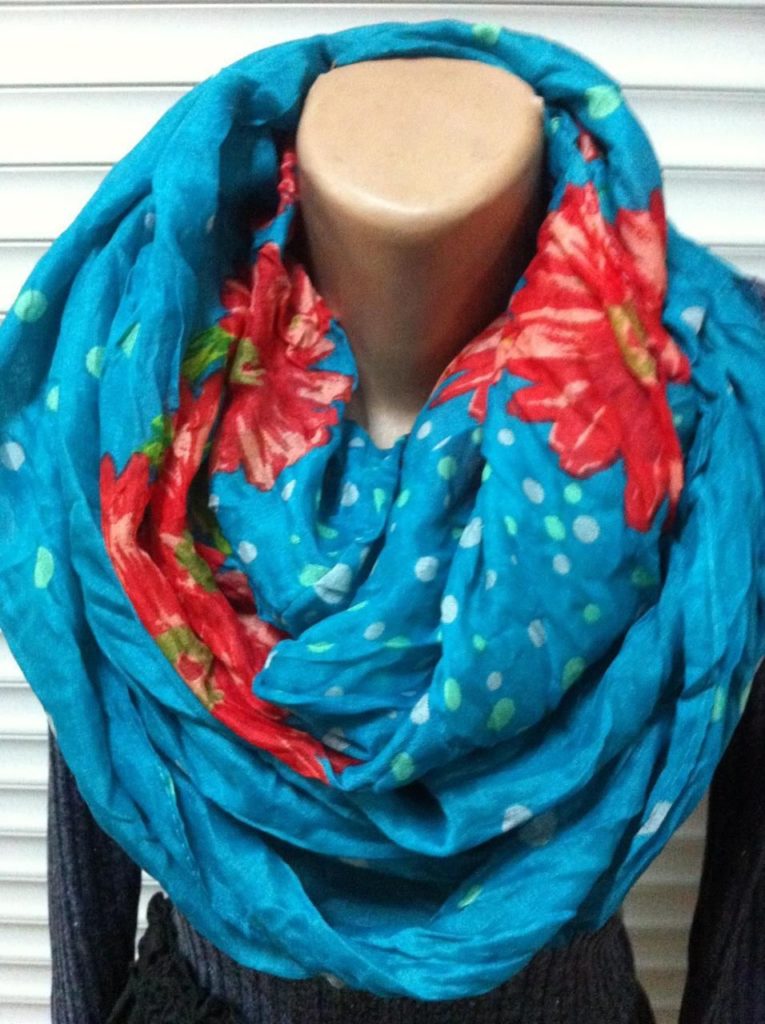
But cotton scarves are not able to protect against the cold. If in cool weather they are still able to retain body heat, then they are not suitable for frost. Cotton knitted accessories are more suitable for early autumn, spring and summer. Their cotton scarves will serve well on a hot sunny day. They will not only decorate your appearance, but also protect you from the scorching rays of the sun.
Linen
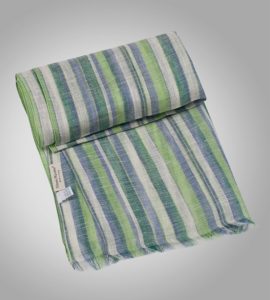 Linen is similar to cotton in many of its characteristics.The difference is that flax fibers are somewhat coarser and less uniform in texture. This feature has found application in linen products in the summer. They perfectly protect from heat and sun rays. Wide linen stole scarves are popular on the beach.
Linen is similar to cotton in many of its characteristics.The difference is that flax fibers are somewhat coarser and less uniform in texture. This feature has found application in linen products in the summer. They perfectly protect from heat and sun rays. Wide linen stole scarves are popular on the beach.
As a rule, linen is not brightly colored or bleached, but its natural tones are used - beige, grayish, greenish shades, playing up the natural heterogeneity of the texture.
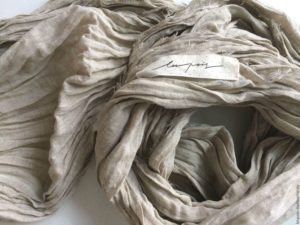 Linen fabrics wrinkle quickly, which is why they do not hold their shape well. But designers have come up with deliberately crumpled accessories from them that can add a twist in the form of slight negligence and relaxation to a strict image.
Linen fabrics wrinkle quickly, which is why they do not hold their shape well. But designers have come up with deliberately crumpled accessories from them that can add a twist in the form of slight negligence and relaxation to a strict image.
Synthetics
Neck accessories made using synthetic materials are more aesthetic than functional. Wearing such a scarf, you will feel that it is hot in the heat, and cold in the cold. This is due to the property of synthetic fibers not to allow air and moisture to pass through. Therefore, try to avoid wearing such a product on bare skin, especially if you are prone to allergies.
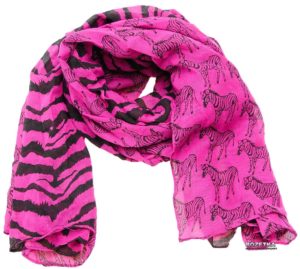
But in terms of its function of effectively complementing an outfit, a synthetic scarf will do an excellent job. Thanks to the texture of the fabric, prints fit perfectly on it; it can be decorated with lurex, sequins and many other finishing elements.
REFERENCE! Due to the ease and speed of their production, synthetic products are the cheapest of all. Its value can only increase due to the value of the manufacturer's brand.
Semi-synthetic fibers
Semi-synthetic materials, due to their availability and practicality, are most common in the production of garments, including neck accessories.The most common combinations of synthetic fibers with wool, cotton and flax, as well as in the composition of these fibers with each other and synthetics.
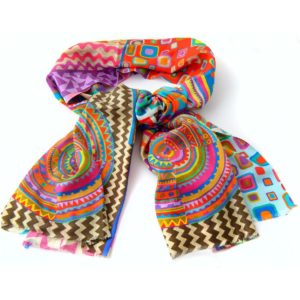 Such products are comfortable to wear, easy to care for and have an inexpensive price. When choosing a scarf made of such material for frequent wearing, it is worth choosing those products in which the percentage of natural fibers prevails over synthetic ones (more than 60%).
Such products are comfortable to wear, easy to care for and have an inexpensive price. When choosing a scarf made of such material for frequent wearing, it is worth choosing those products in which the percentage of natural fibers prevails over synthetic ones (more than 60%).
Viscose
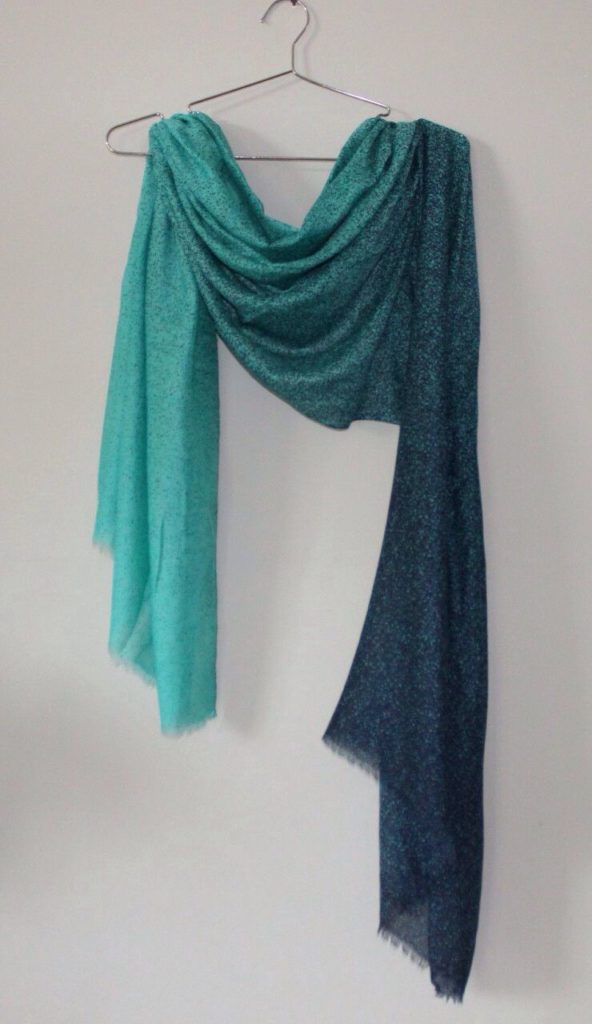 These products stand apart because they are made from natural fiber (cellulose) through its artificial processing. Otherwise, viscose is called artificial silk. Scarves and stoles made of viscose fiber are flowing, drape well and have an interesting look.
These products stand apart because they are made from natural fiber (cellulose) through its artificial processing. Otherwise, viscose is called artificial silk. Scarves and stoles made of viscose fiber are flowing, drape well and have an interesting look.
ATTENTION! Finished viscose products do not have a long service life and do not hold their shape well, which, however, is compensated by their low cost.
We hope this information will help you make the right choice when purchasing the right accessory.


 0
0